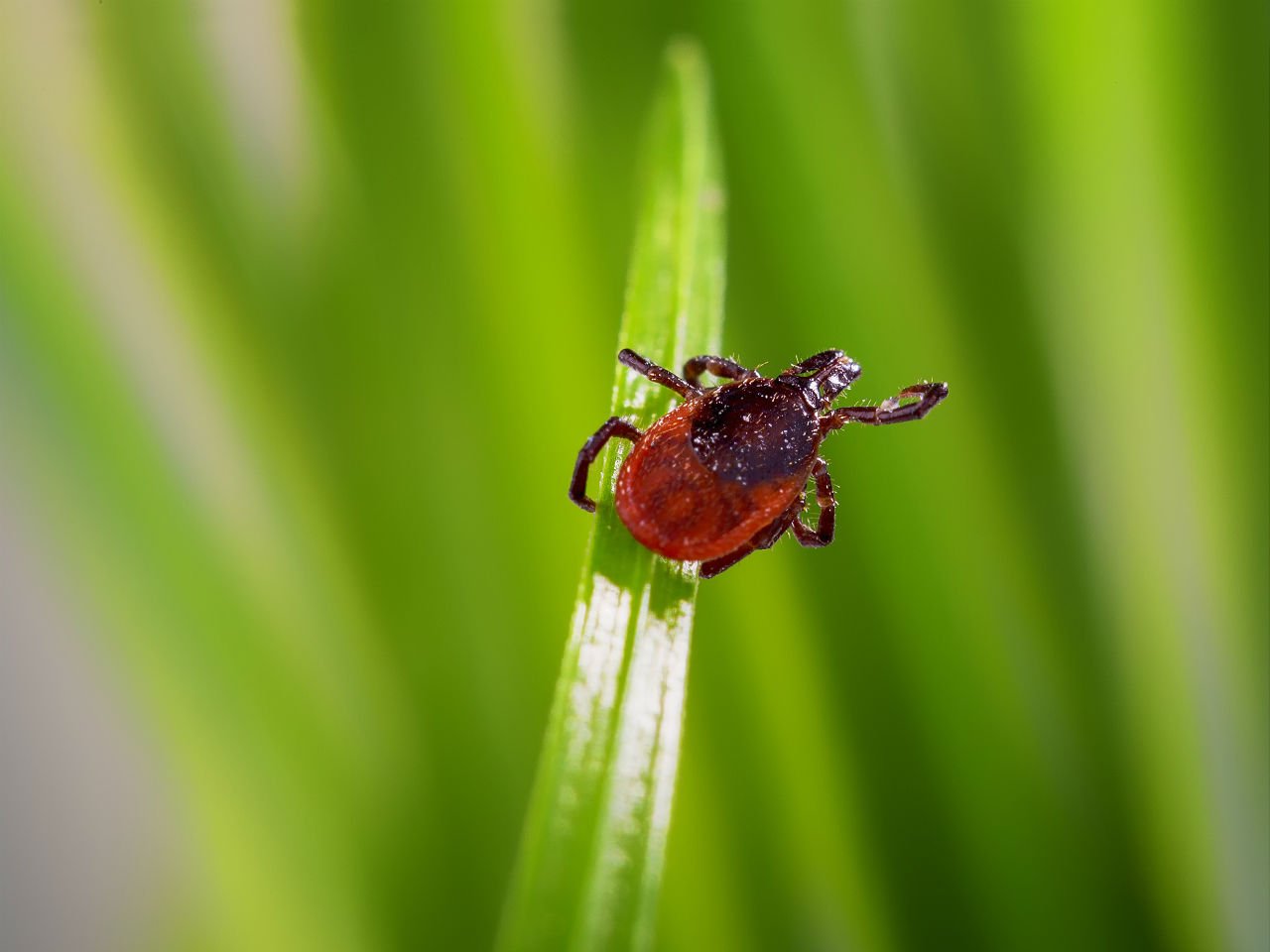
Last July, a day after a family outing to the zoo, Crystal Cochrane of Edmonton was pulling five-year-old Mikayla’s hair into a ponytail when she felt a small sesame-seed-sized bump at her daughter’s hairline, near the nape of her neck. When combing didn’t dislodge it, Crystal looked closer and discovered a tick had firmly attached itself to Mikayla’s head. “I panicked,” Crystal recalls. “We had heard about Lyme disease, and knew it was bad.” Wanting to know for certain whether the bite might make Mikayla sick, the Cochranes headed to the Stollery Children’s Hospital, with the tick (which they had carefully removed and placed in a sealed container) in hand.
Lyme disease, an illness that’s transmitted via the bite of an infected deer tick, is relatively rare but has been on the rise in recent years in Canada (from 144 cases in 2009 to 1,487 in 2018), with children between five and nine years being more commonly affected than most other age groups. If not treated in its early stages, Lyme disease can cause problems, such as meningitis, temporary weakness of muscles in the face and arthritis. A very small proportion of ticks also carry Powassan virus, which can cause inflammation in the brain and serious neurological symptoms. Only about 25 cases have occurred in Canada in more than 50 years, but with ticks on the rise, experts are worried the population of infected ticks may also grow. So what do you need to know to protect your kids?
Learn where they lurk
Do you live in an area where there’s an established population of western black-legged or black-legged ticks? The former is found in parts of BC, while the latter lives in certain (in some cases, expanding) areas of Ontario, Quebec, Manitoba, Nova Scotia and New Brunswick. The proportion of ticks carrying the infection varies depending on location—it’s typically between 10 and 20 percent, rising to more than 50 percent in certain hot spots. “We have maps at Canada.ca, but if you want to know about your region, you’re better off to consult your provincial public health website or phone your local health unit,” says Robbin Lindsay, a Public Health Agency of Canada scientist in Winnipeg who specializes in zoonotic diseases. Tick season runs roughly from May to September.
Reduce your risk of being bitten
Black-legged ticks typically live in, and along the edges of, wooded areas, hanging out on vegetation while waiting for a host to brush up against them. If you’re headed to such a place, make sure your kids wear pants (tuck them into their socks for maximum protection), long sleeves, a hat, and closed-toed shoes. “You want to deny ticks access to your skin,” notes Lindsay. To help spot hangers-on before they can attach, opt for light-coloured clothing. Apply a repellent containing DEET or icaridin to clothing and any exposed skin according to package directions. And soon after coming in from outdoors, systematically check kids from head to toe, ideally before having them take a shower or bath. A Yale study found that showering cuts the rate of Lyme infection more than a tick check alone—perhaps because it requires removing clothing, where loose ticks can lurk. Tossing clothes and gear into the dryer on a hot cycle (after washing if needed) for 10 minutes will kill any ticks hidden within them, says Lindsay.
Practise prompt removal
If you do find a tick attached to your child, lie a pair of tweezers flat (parallel) against her body, and use the tips to firmly grab the tick as close to the skin as you can. Then, pull upward steadily and evenly, taking care not to twist or jerk the tweezers. Once the tick is removed, place it in a container. Cleanse the broken skin with a disinfectant, such as rubbing alcohol or hydrogen peroxide. Because an infected tick has to be attached and feeding for some time to transmit the infection, “if you remove it within 24 hours, it’s highly unlikely the child will get Lyme disease,” explains Joan Robinson, the chair of the Canadian Paediatric Society’s Infectious Disease and Immunization Committee and a paediatrician at Edmonton’s Stollery Children’s Hospital. However, the more rare Powassan virus can be transmitted in a mere 15 minutes, so speedy removal is crucial.
Seek help if necessary
Robinson says there’s no need to take a child to the doctor following a tick bite unless they develop symptoms, such as a rash of any kind, fever, headaches, or muscle and joint pain after being bitten. “Then, it’s helpful to take the tick along,” she adds. If your physician suspects your child may be infected based on symptoms and exposure history, she will prescribe an antibiotic. Since blood tests can’t confirm the diagnosis until up to a month after a bite, when more serious complications can arise, kids can be treated without a formal diagnosis. Treating kids at this early stage almost always cures Lyme disease.
In the small minority of cases that aren’t detected until complications such as arthritis have developed, a longer course of antibiotics (or two) is needed to get rid of the infection, and it can take time for symptoms to disappear afterward.
Even if your child shows no worrisome symptoms, you can take the tick, in its container, to a local public health unit for identification. This helps authorities to track tick populations.
As for Mikayla, it turned out she was bit by an American dog tick—a type that doesn’t carry Lyme—and the redness and swelling were symptoms of a mild allergic reaction. The experience hasn’t dampened the Cochranes’ enthusiasm for the outdoors, though. “My kids have the pleasure of long sleeves, repellent and tick checks,” says Crystal. “And I carry tweezers.” Just in case.
This article was originally published in April 2017
The post Worried about Lyme disease? Here’s how to protect your kids from ticks appeared first on Today's Parent.